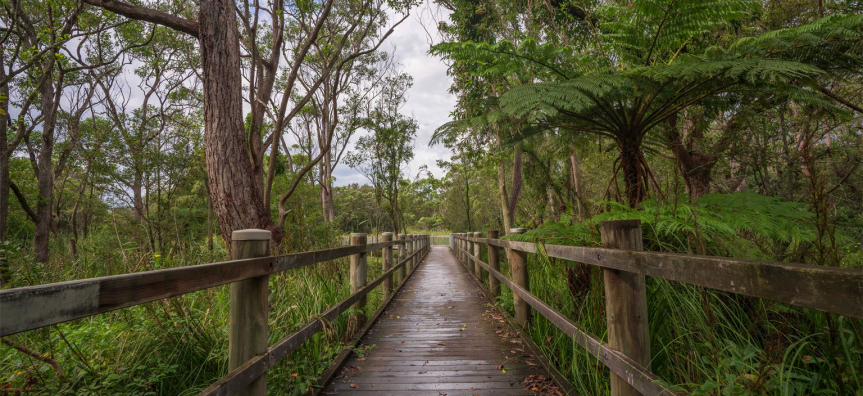
History
Swamp mahogany - taking a last stand
Once a common tree in the Sydney region, these trees now represent the last significant stand of swamp mahogany in the area. With extremely durable timber that is resistant to rotting they have been extensively logged over the years to build boats, wharfs and bridges.
Flora
Swamp mahogany - food and home
The large trees you see around you are swamp mahogany (Eucalyptus robusta). This tree is commonly found growing in waterlogged soils close to the coast. They are an important winter flowering food source for many of the animals that visit or live in the area.
As these trees age, they are affected by natural forces including storms and pest attacks which can result in hollows forming. Many of our native animals are dependent on these hollows as nesting sites to shelter from the weather and protection from predators.
Fauna
A valuable refuge
More than 150 types of bird have been spotted in the wetlands.
The broad range of habitats is the main reason why more species of birds reside in the wetlands compared with surrounding areas. Some are permanent residents and others travel vast distances to visit. The wetlands are therefore a popular location for bird watchers and nature enthusiasts.
Birds play an important role in maintaining balance within these ecosystems. They support plant reproduction by pollinating, dispersing seeds and helping keep insect numbers in check.
By planting natives, especially understory species and providing a water source during hot weather in our own backyards, we can attract and support our local birdlife.
